3 min read
Panama Canal - draught disrupting Global Trade
In recent weeks, Ziegler One has been dedicated to providing you with up-to-date information on the latest developments in the Panama Canal. Our...
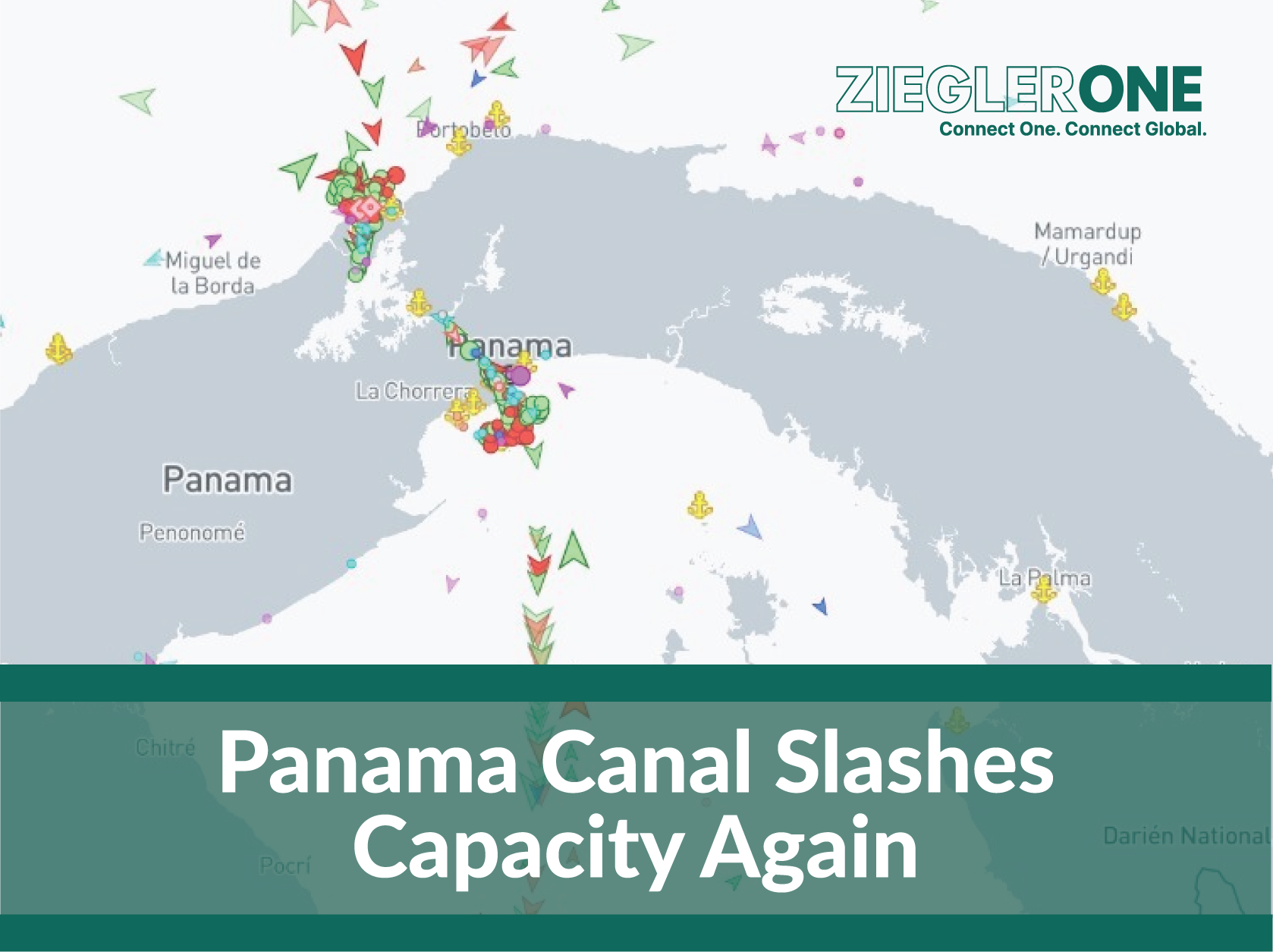
Background
With the record-breaking dry spell experienced in October, the Panama Canal is now implementing strict measures to conserve water, which will have significant implications for shipping in the coming months. Different types of vessels will be impacted differently by these measures.
During the press conference 6 weeks ago on 12 September 2023, Richarte Vasquez, the Administrator of the Panama Canal Authority (ACP), stated, "We will maintain the draft at 44 feet for the foreseeable future. If necessary, adjustments will be made to the number of transits per day." Vazquez made this statement six weeks ago.
He also made the following statement : “We will commit to 44 feet for the foreseeable future. If adjustments are required in order to maintain 44 feet, those adjustments will be on the number of transits per day,”
Every passage through the Panama Canal requires a significant amount of water, regardless of the size of the ship. In the event of insufficient rainfall, the canal authorities have no choice but to either limit the number of transits or decrease the ship's draft, which refers to the permissible distance between the waterline and the hull bottom.
Around 70% of vessels using the Panama Canal require a draft of 44 feet, which is the current limit, down from 50 feet at the beginning this year. If the draft is lowered further, most ships won’t be able to transit with full loads.
These necessary adjustments have now been mandated and were communicated by the Panama Canal through an Advisory to Shipping issued on October 30th. The ACP had previously reduced daily transit reservation slots from 36 to 32. On Tuesday, 7 November 2023 it announced that reservation slots will be limited to 25 starting Nov. 8 and 22 on Dec. 1. The number of reservation slots will fall to 20 on Jan. 1, 2024, then 18 starting Feb. 1.

Impact on container shipping
The Neopanamax locks, which were introduced in 2016, primarily cater to larger container ships, as well as liquefied natural gas (LNG) carriers and high-capacity liquefied petroleum gas (LPG) carriers, also known as very large gas carriers (VLGCs).
On the other hand, the older Panamax locks mainly handle dry bulk ships, tankers, smaller container ships, and vehicle carriers.
The impact of Panama's drought is already being felt by larger container ships traveling from Asia to U.S. East and Gulf Coast ports, as they require more than the current 44 feet of draft when carrying a full load. According to Vasquez, for every foot of draft lost, these container ships experience a decrease in capacity equivalent to 350 twenty-foot equivalent units.
Thus, this year’s loss of 6 feet of draft equates to 2,100 TEUs of cargo. Liners have either had to sail with lower utilization or unload 2,100 TEUs on the Pacific side of Panama, rail them across the isthmus and reload on the Atlantic side.
The just-announced transit restrictions avert or delay further draft reductions that would force liner companies to unload and reload even more containers.
However, it is anticipated that the transit reservation cap will have an impact on schedules.
Over the next two months, the number of Neopanamax transit reservation slots will be cut in half, from 10 currently to five as of Jan. 1.
During the past two fiscal years (the ACP’s fiscal year ends Sept. 30), there was an average of 4.7 container ships transiting the Neopanamax locks per day, according to FreightWaves calculations based on ACP transit data.
That historical container-ship average is right at the Feb. 1 limit for total Neopanamax reservation slots (for all ship types) — and it’s just an average, meaning that on many days over the past two fiscal years, there were more than five container ship transits through the Neopanamax locks.
Container shipping flows, as with other ocean cargo flows, rise and fall seasonally. Thus, some container service scheduling changes appear likely while restrictions are in place.
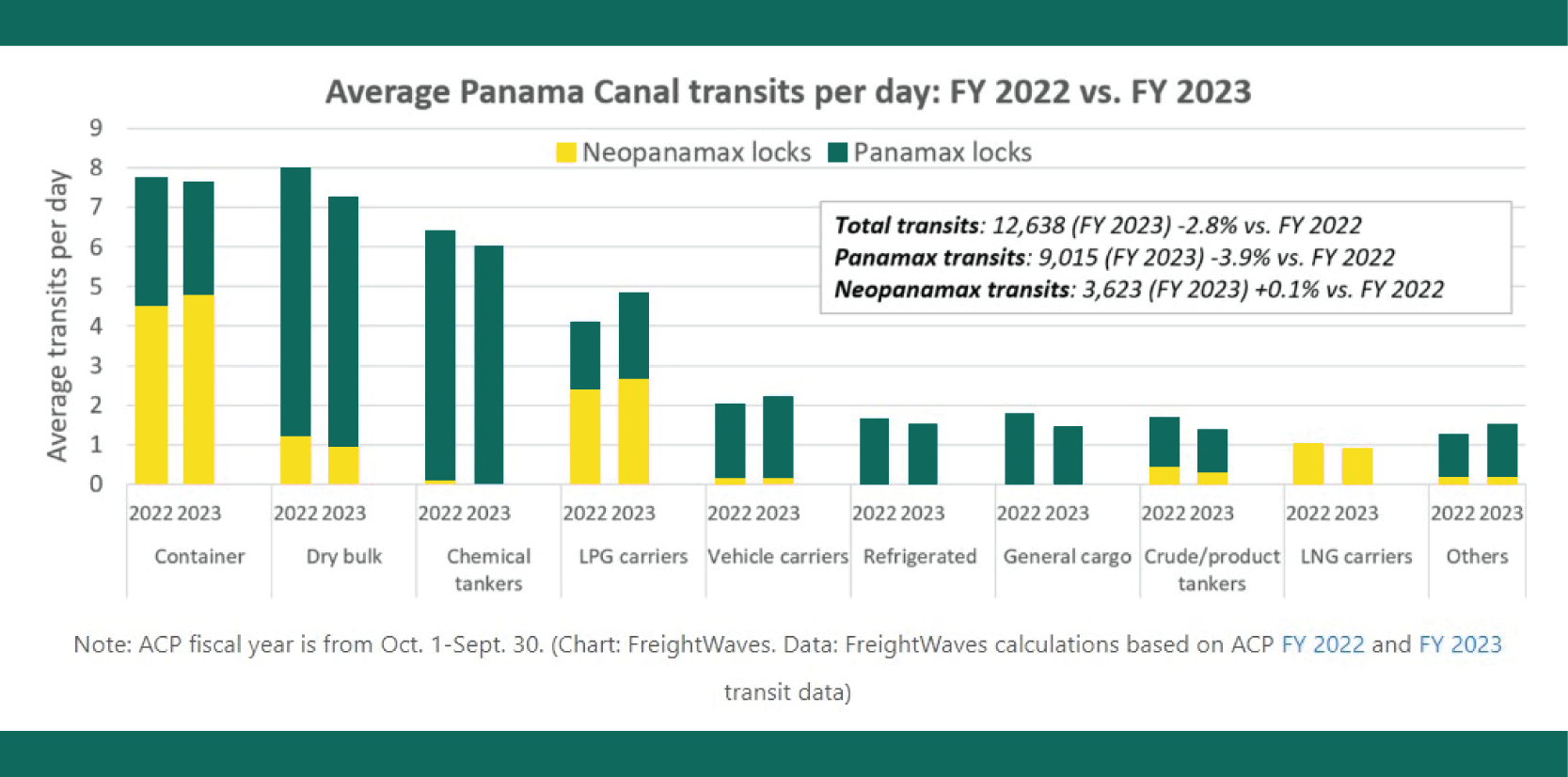
Effects on LNG and LPG shipping
The new limits raise serious questions on the extent non-containerized ships can use the Neopanamax locks (VLGCs and LNG carriers are too big to fit through the Panamax locks.)
Over the past two fiscal years, the Neopanamax locks have averaged 9.9 ship transits per day (including both reserved and non-reserved transits), right at the current reservation slot limit of 10 — which, as of Friday, drops to eight.
In addition to container ships, an average of 2.5 VLGCs, 0.9 LNG carriers and 1.8 ships of other types have transited the Neopanamax locks per day.
Assuming precedence is given to container ships when restrictions are in place, most LNG carriers and VLGCs would be forced to take the longer route to and from Asia, either via the Suez Canal or the Cape of Good Hope. That rerouting has already begun, and will inevitably accelerate.
Oystein Kalleklev, CEO of Avance Gas (Oslo: AGAS), told FreightWaves in a recent interview that many VLGCs already avert the Panama Canal on their return leg for Asia, due to the uncertainty of meeting their loading windows in the U.S. Gulf as a result of canal delays.
Frode Mørkedal, shipping analyst at Clarksons Securities, said in a client note Wednesday that transit restrictions “will touch most shipping sectors that navigate the canal, [but] VLGCs and LNG carriers are poised to experience the most substantial effects.”
The longer distances traveled by VLGCs and LNG carriers will soak up more transport capacity and support higher rates. Mørkedal noted that VLGC freight futures “strengthened significantly” on news of Panama Canal restrictions, with the 2024 futures contract for VLGC voyages from the Middle East to Japan jumping $10,000 on Tuesday, to $70,000 per day.
Alternative - Reservation of slots
An alternative option is available, but it comes with a significant cost and is limited to container lines that heavily depend on booking slots to secure a specific transit date and maintain their strict schedules. This preference for reservation slots ensures that they can confidently plan their operations and maintain efficiency in their shipping processes. As a consequence of the aforementioned cuts, the prices of reservation slots have surged to unparalleled heights during this year's auctions. Consequently, larger container ships have been forced to operate with diminished cargo capacity or resort to unloading containers for transshipment across Panama. Unfortunately, this alternative is not available to gas carriers and bulkers.
Original URL's:
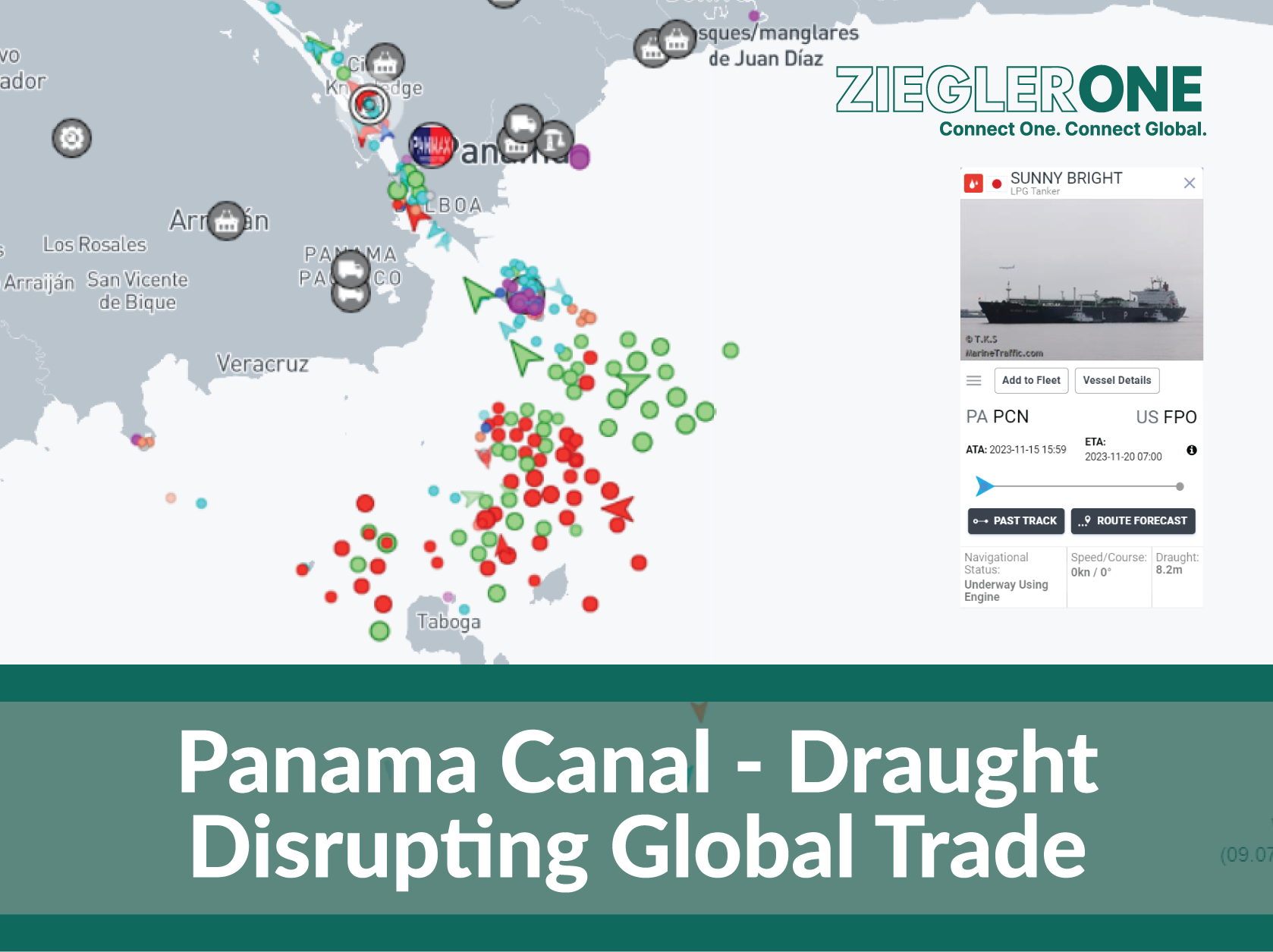
3 min read
In recent weeks, Ziegler One has been dedicated to providing you with up-to-date information on the latest developments in the Panama Canal. Our...
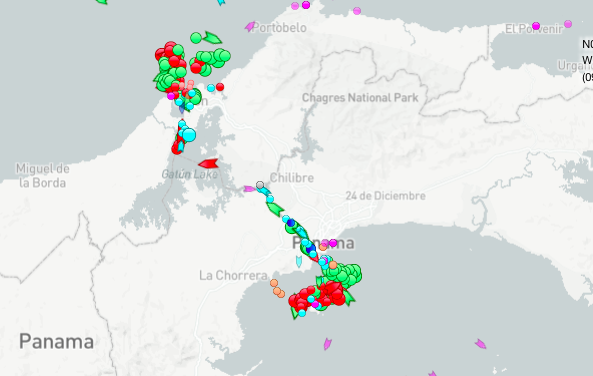
The Panama Canal Authority (ACP) has moved to highlight the real congestion numbers at both ends of the waterway amid misleading reports carried in...
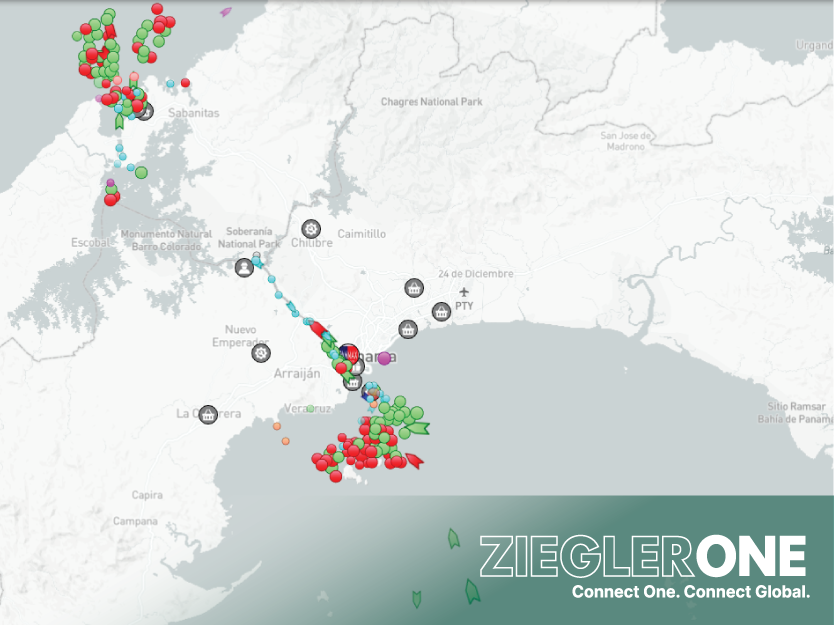
1 min read
Last month, the wait time for non-booked vessels at the Panama Canal increased by 44% to 59% due to a prolonged drought. The canal authority imposed...